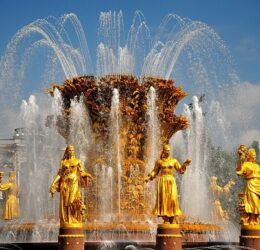I would like us to turn our attention to “A traditional song played on the qobyz (Kazakhstan)” and “‘Spanish Fantasia’ for kobyz and piano by Igor Frolov (Kazakhstan)” on our playlist for today. According to our reading, we are told the musical aspects of the Soviet Cultural projects was something that was easier to prompt than other projects. We are also told that by the late 1930s, there were some rules on how to be respectful in terms of cultural exchange: “First, the process before the revolution was unidirectional, while in Soviet times it became reciprocal […] Second, before the revolution only a few individuals sought out the songs and dances of the East, while now a significant portion, perhaps even the majority, of Soviet composers worked with this material. […] Third, the fairy-tale and fantastic elements of Russian orientalism contrasted with Soviet music, which, while legitimately open to the earlier styles, did not allow its conventions to overshadow the whole, diverse reality of the East” (353-355). I am wondering, how you think this quote from Frolova-Walker operates with these two pieces from Kazakhstan. Do you think the folk instrument here is being played in the same way in both videos? If it is not being played in the same way, do you that it is respectful or appropriation?


Cultural Construction in the Soviet Empire (HIS315 F20)
National in Form, Socialist in Content!